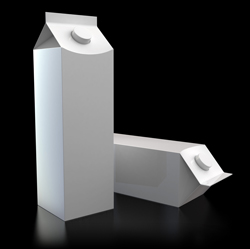The pursuit of perfect packages
Today's plastic and paper-like films used for food packaging are still not as ideal as they could be. They are not always effective as barriers against water, grease, oxygen, odours, etc. In addition, they are not eco-friendly for the most part and are mostly made of petroleum-derived substances. The Flexpakrenew project, an EU-funded initiative, is working on the design and development of innovative eco-friendly flexible paper packaging from renewable resources to replace petroleum-based films. The project is focusing on developing multilayer paper-based material that will be recyclable, biodegradable and use only environmentally friendly processes. Although the project involves many different and complex steps, the project team has made significant headway in many respects. To begin with, it has succeeded in applying colour at the very early stages of paper formation, which makes for a healthier final product. It has also decreased air permeability by adding a safe substance called micro-fibrillated cellulose (MFC) to the film manufacturing process. The project team is also working on developing water-resistant coatings based on a plasticised biomaterial that is reinforced with micro-particles or nano-particles. Considerable effort has been invested in identifying the optimal combinations of materials such as starch, hemicellulose (plant polymer), bentonite (type of clay) and plasticisers involved in producing the required products. Combinations and interactions were tested in order to achieve the best barrier properties, and the desired results were achieved. Two innovative surface treatments were also assessed. The first is called chromatogenic grafting (a solvent-free chemical method to manipulate molecules) which proved to be highly water repellent. The other, which is much more challenging, is vacuum coating. The materials to be coated must be very smooth and resistant to environmental changes associated when they enter the vacuum chamber, a difficult feat using the paper and plasticiser under consideration. However, progress was also made on this front with leads that will help develop more advanced barrier materials using a paper substrate. Research was then undertaken to develop anti-microbial coatings that prolong shelf life for packed products and minimise contamination by preservatives. A sustained release concept using preservatives embedded in capsules was also assessed. Several preservatives were tested successfully with further testing on the way to comply with food contact regulations. Eco-friendly properties were strongly considered, and the overall results are positive, according to the project team. Actual samples have been manufactured on a trial basis which validated the successes achieved in the laboratory. After this string of successes it is likely that such packaging will hit the shelves sooner rather than later.







